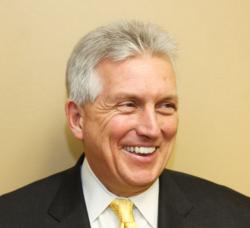Day: May 23, 2018
Effective Leaders Understand Purposes and People
Leadership, and particularly “covenant leadership,” involves more than just understanding the organizational purpose; it also involves understanding the people who have that purpose in common. In fact, without followers working cooperatively towards the common purpose, leaders can hardly expect significant success.
Understanding Individual and Organizational Purposes
As a leader that means I must understand the people I lead as well as the purposes we serve. If people are the key to success, then leaders must know, attend to and listen to followers with focused precision and sometimes make adjustments. Success is not just about the leader’s personal ability or knowledge of processes. Sure that’s important, but to lead, leaders must actually motivate others to follow them. The late leadership guru, James MacGregor Burns commented simply, “Without followers there can be no leadership.”
Accordingly, if leaders need to know and serve the people around them, then they also need to spend time talking and listening to them. Wharton School Professor Stewart Friedman wrote on becoming a better leader. He commented simply, “If I account for the interests of the whole person, not just the work person, I’m going to get more value from them.”
Serving Mutual Needs
This comes full cycle because leaders seek eventually to engage the “whole work person.” Yet for that to happen, it also means that leaders can’t simply pursue their own selfish purposes. The focus should also be on pursuing common and ethical purposes that promise to serve the mutual needs and goals of all organizational partners. Essentially, covenant leadership achieves all of that and more by respecting and listening to the needs and ideas of others and then making appropriate changes and empowering people to do their jobs. That’s what builds trust, binds people together and increases productivity. In nonprofit fundraising it is also what builds donor engagement and retention. This is not just soft rhetoric; there are hard numbers to support this logic.
Consider Cisco Corporation. Between 2012-2017, the company had a 15% increase in their workforce and yet by listening to worker needs and ideas they were able to reduce their real estate portfolio by 30%. They closed 241 buildings, saving $196 million in operating costs and gaining $288 million from building sales. They also took the emphasis off of individual work and put a new emphasis on collaboration and community. That helped them achieve a 17% increase in both employee engagement and workplace satisfaction. It also allowed them to grow in profitability from $6.5 billion in 2011 to a high of $10.7 billion in 2016.
Balancing Individual and Organizational Trust with Accountability
Stakeholder trust must be balanced by stakeholder accountability. Maximum productivity requires that professional and personal stakeholder purposes are served, but stakeholders must also serve the larger purposes of the organization. In fact, common purposes actually link stakeholders together in a common bond. That’s why, individual purposes must always tie directly to and find fulfillment in achieving the larger purpose of the organization.
If leader-follower relationships are productive, they will be formed by the convergence and subsequent fulfillment of individual and organizational purposes. Of course, this again does not divest the organization and its people of accountability. That simply wouldn’t be fair to folks who are engaged and working hard. Thus, the chief needs of stakeholders must also be both integrated with and balanced by the larger organizational purposes.
Finally, once leaders understand both the individual and organizational purposes, they must pursue those purposes in ways that everyone understands and embraces. That doesn’t just happen by chance; it takes deliberate and strategic planning on the part of leaders. Does it sound like a lot of work? Sure, but it’s also rewarding when everyone succeeds.
